Breast cancer: facts, causes, gene testing, treatment & prevention
Table of Content
1. Science-backed facts about breast cancer
2. What is breast cancer? Definition
3. Breast cancer in males. What are the statistics on male breast CA?
4. What causes breast cancer?
5. What are the risk factors of breast cancer? How do you get breast cancer? Breast cancer in special situations.
6. Can it be inherited? Is breast carcinoma genetic? Hereditary breast cancer.
7. What are the list of genes involved in breast cancer?
8. Breast cancer, gene testing, counselling, and the Angelina Jolie story.
9. What are the symptoms of breast Ca?
10. Diagnosis? What are the tests used to diagnosed breast ca?
11. Staging. How is breast CA staging determined?
12. Staging and survival rates.
13. Treatment of breast cancer
14. Black- white disparities in breast cancer deaths.
15. Prevention of breast Ca
16. Breast carcinoma in Nigeria.
17. Resources
1. Science backed facts about breast cancer
- Cancer of the breast is the most common malignancy affecting women in many parts of the world
- Globally, it accounts for 18.4% of female cancers.
- 1 in every 8 Caucasian women in the USA will develop breast cancer in their life time
- 1 in every 14 black women will develop breast cancer in their life-time
- 1 in 12 women in Britain will develop breast carcinoma in their life-time.
- Japan has the lowest incidence of breast CA – 1 in 60 women.
- Many genes have been implicated in cancer of the breast
- Gene testing can help nip breast cancer in the bud.
- The movie star, Angelina Jolie showed courage by undergoing a prophylactic removal of her breasts when her gene testing showed she was positive for a defective gene of breast cancer.
- The causes of breast carcinoma are not yet known but a number of risk factors have been identified.
- Only 1% of breast ca occurs in males. Very uncommon.
- It has a high propensity to spread to other body organs.
- Cancer of the breast can be detected by self- examination of the breasts, mammographic screening, ultrasound, and biopsy.
- The staging determines treatment and survival rates.
- Treatment of cancer of the breast may involve surgery, radiation, or chemotherapy.
- Cancer survival rates in worse in blacks compared to white women.
- Early detection is key in the treatment and survival of breast cancer.
- Nigeria has the highest breast cancer death rate in the world according to the WHO
- 1 in every 25 women dies of breast cancer in Nigeria.
- It is not a death sentence, survivors lead normal lives.
2. What is breast cancer?
It is a malignant tumour of the breast that arise because of disorganized and unregulated growth of the breast cells with a propensity to metastasize to other body parts. Now let us explain so key terms in this definition. Malignant means cancerous, tumour means a growth, lump, or swelling; disorganized here means uncontrolled, metastasize means to spread to other body parts or organs. Hence. Breast cancer is a cancerous growth, lump or swelling of breast cells that arise from the unhindered action of the breast growth cycle with the capacity to spread.
READ ALSO: 85 SCIENCE-BACKED FACTS ABOUT THE BREAST
3. Breast cancer in males. What are the statistics?
It is uncommon and accounts for about 1% of all male cancers and 0.6% of all breast cancer world-wide. It has a very poor prognosis or survival rate probably due to late diagnosis. They have similar symptoms as female cancer. About 2000 new cases are diagnosed yearly in the USA. In Ghana, it accounts for 2.4% of all breast cancers, in Nigeria for 2-3.75%, in South Africa blacks, 1.7% and in Egypt 6.5%. It may be associated with Klinefelter’s syndrome or hepatic schistosomiasis in which there is high levels of estrogen due to liver damage. It is highest in Egypt because of the high incidence of schistosomiasis. Other risk factors of breast cancer in males are like that of females. They may occur at any age but patients are most between age 50 and 80.
4. What causes breast cancer?
Although, we know that normal breast cells become cancerous because of mutations, alterations or damages in the DNA which may be inherited or acquired during our lifetime; the cause of breast cancer remains unknown. Epidemiological studies however, has been able to identify certain associated risk factors which influence the chances of a woman developing the disease.
There are special proteins in our body that helps control cell growth called proto-oncogenes. Sometimes these proteins may become damaged or undergo some changes. Alteration of the proteins leads to their loss of primary function of controlling breast cell growth. Hence, cell growth becomes uncontrolled, unregulated, and disorganized leading to cancer.
5. What are the risk factors of breast cancer? Special situations
The risk factors of breast cancer may be modifiable i.e. depends on you and your lifestyle (e.g. alcohol use and smoking), non- modifiable i.e. you cannot be influence it (e.g. gender and age) and inconclusive i.e. more research findings are needed to reach to establish a conclusion. A tool known as the Breast Cancer Risk Assessment Tool (BCRAT) has been used to study and calculate the risk of women developing breast cancer in their lifetime. The risk factors are stated below:
· Gender
Being female is a risk factor of breast cancer. Compared to the 1% in males, 99% of breast cancers occurs in females.
· Age
It is very rare in the young. The risk factor increases with age. It is highest at age 50-70years and declines thereafter. The average age of diagnosis is 61 for whites, 56 for Hispanics and 46 for blacks.
· Early menarche and late menopause
Women with early menarche (before 12) or late menopause (at 55 or later) have 1.5 times greater risk than those with menarche (age at which a girl first bled) at normal age or menopause by 45. Castration (removal of the ovaries) before 35 or early menopause reduces the risk by half. The prognosis of breast cancer in women with early menopause is better. Late menarche also reduces the risk.
· Family history
There appears to be an inherited predisposition to cancer of the breasts. You are at greater risk of breast cancer if your grandmother, mother, aunt, or sister, i.e. your first- degree relatives has had the disease compared to others who no positive family history. If two or more of your close relatives are affected, the risk becomes more significant. The children or sisters of a woman who develops bilateral breast cancer have a 50% chance of having the disease between 20-40 years. It must be pointed out, however, that eight out of nine patients who develop breast cancer do not have affected mother, sister, or daughter.
· Age at first pregnancy and nulliparity
The age at first pregnancy is important, those having the first child at 18 years or less being more protected than those having it after 30. The risk of postmenopausal cancer, is tripled when the first birth occurs after 35. Nulliparity (has not given birth at all) increases the risk and unmarried nulliparous women have a greater risk than those who are married.
· Previous Breast cancer
The incidence of CA breast is 16 times higher in women who have been ‘cured’ of cancer of one breast. Thus 15% and 16% of women who survive 20 and 30 years respectively after treatment of breast cancer develop cancer in the other breast. About 6% of all patients have had treatment for cancer of the opposite breast.
· Race and ethnicity
Breast cancer is higher in whites compared to blacks. But the more aggressive form with worse prognosis is found in black. Its incidence is fast rising in blacks probably because of life style changes and westernization of our diet. Blacks tend to develop breast cancer at a younger age compared to whites. Deaths from cancer is higher in blacks than whites.
· Breast cancer, cancer of the uterus and ovary
The risk of cancer of the breast is double in women with previous cancer of the endometrium or ovary probably because of a common hormonal or genetic (BRCA) influence.
Other risk factors are:
· Breast cancer and oral contraceptives
Oral contraceptives have not been shown to clearly affect its risk as research findings are mixed. But combined oral contraceptives do decrease the risk of endometrial and ovarian cancer. Women who have taken combined contraceptives and stopped after 10years, have a small increased risk of developing cancer. But the tumour is not aggressive and confined to the breast.
· Breast cancer, diet, and fat intake
The rates correlate with the amount of fat in the diet. Thus, the incidence is high in the USA, Britain, Switzerland, and Denmark, i.e. countries with high fat-rich diet (38-42% of calories) and low in Japan, a country with a low-fat intake (<25%). However, in Japan there was nearly 60% increase from 1975 to 1985 believed to be due to “westernization” of the diet with increase in fat intake. It is predicted that cancer of the breast may become the number one cancer killer in women if the trend continues. Intake of animal fat mainly from red meat and high fat dairy foods before menopause appears to increase the risk of cancer.
People with high fat intake have a higher risk than people with low fat intake probably because of higher production of oestrogen and other steroids.
· Smoking
Smoking per se is not a risk factor. But there is a genetic defect that predisposes to breast cancer. It is twice as common in Caucasians as in other races. Women, who have the genetic defect and smoke, develop breast cancer four times more often than the general population. Because of the genetic defect, they are not able to detoxify the carcinogens in cigarette. Smoking also increases the complications of breast cancer treatment and causes delayed healing. It reduces breast cancer survival rates.
· oestrogen exposure
It is highly probable that breast cancer is closely associated with oestrogens. This is supported by the increasing risk with age, longer period of menstrual activity (early menarche and late menopause), nulliparity, late age of first child birth, and the fact that about 70% of tumours are estrogen dependent. The incessant high levels of oestrogens excite breast cell proliferation and increase the number of cancer cells.
However, oestrogen was used in the past for palliation in postmenopausal advanced cancer with considerable improvement in some women.
· Hormone replacement therapy.
Women on hormone replacement therapy (HRT) for more than 5 years have slightly higher risk of breast cancer than- 2 cases per 1000- and ovarian cancer. However, the tumour is small and confined to the breast. The risk disappears after cessation of HRT. HRT increases the risk of cardiovascular disease but improves osteoporosis as well as the general health of the patient.
· Breast cancer and breast feeding
The longer women breast feed, the greater the reduction in the risk. Breast feeding suppresses ovulation and circulating estrogens and projection. The lower incidence of breast cancer in developing countries is probably due to longer periods of breastfeeding but this is changing because of ‘westernization’ of our lifestyles. Breast feeding decrease cancer risk because the women have a fewer menstrual cycles and exposure to oestrogens.
· Breast cancer and abortion
Abortion in many countries is a no- go area for personal, religious, and political reasons. Results from studies between cancer and abortion remain mixed and not clear cut. While some found the relationship to increase the risk, other studies showed no relationship.
· Breast cancer and breast implants
There is no concrete research yet. About 9 deaths have been reported from a rare cancer associated with breast implants in 2017. This cancer is known as anaplastic large cell lymphoma. Further research is needed here and I will keep you updated.
Breast cancer and the environment.
What are the chemical causes of breast CA in the environment?
Exposure to some chemicals in the environment can cause DNA damage and increase the risk of breast cancer. About 17 highly toxic chemicals have been identified and studies have revealed that they increase cancer risk. The chemicals may be in form of the drugs or the food we take, or the normal daily organic solvents, detergents, sprays, paints, and deodorants we use or simply environmental exposure to radiations. The chemicals may cause the DNA damage directly or it may be from its breakdown products. Alcohol, tobacco smoke, soot from chimneys increases the risk of breast CA. The greatest sources of breast carcinoma are from gasoline and its combustion by products like benzene.
6. Can breast carcinoma be inherited? Is it genetic? Hereditary breast CA
Breast cancer can be inherited and the mode of inheritance is autosomal dominant meaning mutation or alteration in any one of the inherited breast cancer genes known as BRCA 1 and BRCA 2 can lead to cancer of the breast. Now, let me explain further, we all have numerous breast cancer genes but the most significant ones and the BRCA 1 and BRCA 2 genes. Their function as stated earlier is to repair damaged cell DNA of the breasts and ovary helping them grow normally. But when these are altered or mutated, they are passed on from generation to generation. These altered genes do not function normally or have completely lost their primary function thereby increasing cancer risk in women.
Women with hereditary cancer develops it at a very young age, it affects the two of her breasts at once and she has a family history of cancer in either her grandmother, mother, aunt, sister, or the presence of a male with breast cancer in her family. Breast cancer associated with BRCA 1 are usually of very high grade and aggressive.
She is also at risk if there are cases of ovarian, colonic, or prostate cancer in her family. Hereditary breast cancer accounts for 5% of all breast CAs.
Now, what are the genes involved in breast cancer? See below;
7. What are the list of genes involved in breast cancer?
Research has proven that there are certain genes involved in cancer. Mutations and inheritance of these mutated genes are a risk factor for breast cancer. Normally, these genes produce certain proteins known as tumour suppressor genes (TSG). TSG helps repair damaged DNA and prevent disordered growth of breast cells. Mutations of the genes leads to their inability to check cell growth and the development of cancer. See the genes below.
- BRCA 1
- BRCA 2
- P53
- PTEN
- CHEK2
- LKB1
- ATM
- PALB2
Do you know that you can be tested or screened for abnormal BRCA 1 or BRCA 2 and the risk of developing breast ca averted? Angelina Jolie blazed the trail on this one. How? That takes us to the next topic of discussion below.
8. Breast cancer, gene testing, counselling, and the Angelina Jolie story.
Blood samples can be taken from a woman for DNA analysis to identify mutated or altered breast cancer genes in either BRCA 1 or BRCA 2 and the outcome of the gene testing used to predict or prognosticate the likelihood of the woman developing breast or ovarian cancer in future with important decision taken after genetic counselling.
Gene testing becomes necessary when the woman has a strong family history of breast or ovarian cancer. If the woman tests positive (she has a defective gene), she undergoes genetic counselling, counselled on the next line of action and she makes her choice. The next line of action here may be to do nothing but with increased surveillance in the form of breast self-examination and routine mammography, or she may decide to do prophylactic mastectomy and ovary removal to reduce cancer related diseases and death.
The brave and courageous Angelina Jolie shocked the world by doing the later in 2013.
The Angelina jolie gene testing bravery
After disclosing to the public that she had tested positive for the mutated BRCA 1 gene in 2013, with 87% chance of developing breast cancer in future, she made the decision to do an elective surgery for the prophylactic removal of her breasts and followed it up 2 years later with the removal of her ovaries, uterus and fallopian tubes. That is extreme, right? But don’t blame her. She is brave. Hear her story: She has lost 8 of her family members to different forms of cancer.
Mother- ovarian cancer
Grandmother-ovarian cancer
Great grandmother- ovarian cancer
2 aunties- cancer of the breast
Great aunt- breast cancer
Cousin- cancer of the breast
Uncle- died of cancer
With this family history, will you still question her decision or call her brave?
9. What are the symptoms?
Cancer of the breast may present as:
- Painless swelling in the breast most commonly. In some cases, the swelling may be painful.
- Mammographic (or screen detected) abnormality.
- Blood- stained nipple discharge
- Retraction the nipple.
- Breast may be larger than normal
- Dimpling or ulceration of the skin
- Breast skin infection especially around the areola
- Others are symptoms of spread or metastasis to other body organs. See table below.
Symptoms of breast ca spread to other body organs
| Spread to body organs | Symptoms |
| lungs | Cough or difficulty in breathing. |
| bone | Bone pains, backache, fractures |
| Spinal cord | Paralysis of the lower limbs |
| liver | Enlarged liver, ascites, abdominal pain |
| Brain | Headaches, confusion, convulsion, vomiting, loss of consciousness. |
A table showing breast metastasis
10. Diagnosis
The diagnosis of breast cancer can be of 99% accuracy with the Triple assessment tests which include
- Clinical evaluation
- Imaging
- Cytology/histology
Clinical evaluation involves interview section with the doctor where you will tell your complaints to the doctor, some questions will be asked concerning your symptoms and you will be required to provide answers concerning how you feel. Thereafter, the doctor will exam your breasts.
The common imaging techniques used are mammography and ultrasound, MRI, and PET-CT scan. Mammography is a good screening tool for breast cancer but may not detect about 10-15% of cancers. Ultrasound is operator- dependent but has a sensitivity of 70-90% and a specificity of 80-90%. It is good for imaging of young women below 35 years. MRI is expensive but highly sensitive. It is used for solving problems after conventional mammography and ultrasound proved doubtful or inconclusive. PET-CT scan is the most accurate and useful imaging modality for staging breast tumour because it provides whole-body assessment.
Cytology and histology are used not only for diagnosis but also in determining the estrogen/progesterone and if possible Her-2/neu receptor status of the tumour. In cytology/ histology, a breast tissue will be taken from your breast for studies.
11. Staging of breast cancer.
Staging of breast carcinoma is the process of determining the extent of cancer spread in the body. Staging is useful in planning appropriate treatment and determining prognosis (chances of survival). There are different imaging techniques and clinical manoevres used to determine the extent of spread. The staging investigations are in the table below.
| Staging investigations | Comments (reasons for doing the tests) |
| Chest X-ray | Shows spread to the lungs |
| Bone scan | Picks up spread to the bones |
| X-ray of the spine, pelvis, and skull (useful where facilities for bone scan are not available) | Not very sensitive. Picks up spread to the bones |
| Liver ultrasound | Picks up spread to the liver |
| CT-scan of the brain | Detects spread to the brain |
| Liver function test | Checks for elevated liver enzyme |
| Full blood count | Red cells and platelets decreases with cancer spread to the bones. |
12. Breast cancer staging and survival rates. How does staging affects survival rates? What is the prognosis
Survival rates are a way for your doctor to discuss the prognosis and outlook of your diagnosis with you. A 5, 10, 10, 20 or 25-year period can be used. But, in clinical practice and from clinical experience most doctors use a 5-year survival estimate. It is the percentage of patients that live at least 5 years after they are diagnosed with cancer. These percentages have often changed over the years with advancement in medicine, therapy, and patient care. The survival rate varies from woman-to-woman. Some patients live much longer even up till 25 years after diagnosis while some die within the first 5 years.
The table below summarizes the staging and survival rates of cancer of the breast.
Breast cancer survival rates
| staging | 5- year survival rate (%) |
| I | 100 |
| II | 93 |
| III | 72 |
| IV (advanced stage) | 22 |
Table showing cancer survival rate. Adapted from National Cancer Institute’s database
13. Treatment of breast cancer
There are many treatment options of breast cancer. Treatment modalities depends on the type, clinical status, age, and stage of the disease. Below is a summary of the available treatment options.
- Surgery in the form of breast-conserving surgery, mastectomy, or preventive surgery.
- Radiotherapy
- Cytotoxic chemotherapy
- Hormonal therapy and
- Immunotherapy
Most times these treatment options are combined to get the best outcome.
14. Black- white disparities in breast cancer deaths.
Deaths from breast ca is more in blacks than in whites. The two main reasons may be the more aggressive form of cancer in blacks and socio-economic barriers from unequal wealth and knowledge distribution. The barriers may stem from poverty, poor access to quality health care and cultural hindrances. Most black women with breast tumour report late at the hospital when the disease is at an advanced stage. Despite the breast ca awareness campaign, many blacks are either not aware or have refused to key into the programme.
15. Prevention
There is no sure way of preventing cancer of the breast. However, the risk factors can be modified to reduce the chances of developing cancer. Early detection through self-breast examination, routine mammography and prompt treatment when detected be of immense help.
Tamoxifen, taken 4-5 years reduces the incidence of breast cancer by 44% in women aged 35-49years. It is therefore recommended for prophylaxis in women with high risk for developing breast ca and in post-mastectomy patients.
Prophylactic bilateral mastectomy just like what Angelina Jolie did is recommended for BRCA 1 and BRCA 2 mutation carriers and other high- risk patients after genetic counselling. It reduces cancer by 90%.
Prophylactic removal of the ovaries in pre-menopausal women reduces risk by 50%. Those who refuse surgery may be put on tamoxifen.
16. Breast cancer in Nigeria.
- Breast cancer is on the rise in Nigeria.
- It is the commonest cancer among women
- It kills 1 in every 25 Nigerian women
- Most Nigerian women with cancer present very late.
- Religious inclinations and cultural beliefs delays diagnosis of cancer of the breast.
- Just like other blacks, Nigeria women have an aggressive for of the cancer
- Poor record keeping and non-existent cancer registry makes statistics of breast ca in Nigeria unreliable.
- A lot still needs to be done on breast ca awareness campaign in Nigeria.
17. Resources
- Principles and Practice of Surgery in the Tropics by Badoe and Achampong.
- Pathologic Basis of Diseases by Robbins and Contran
- medicinenet.com
- Pubmed





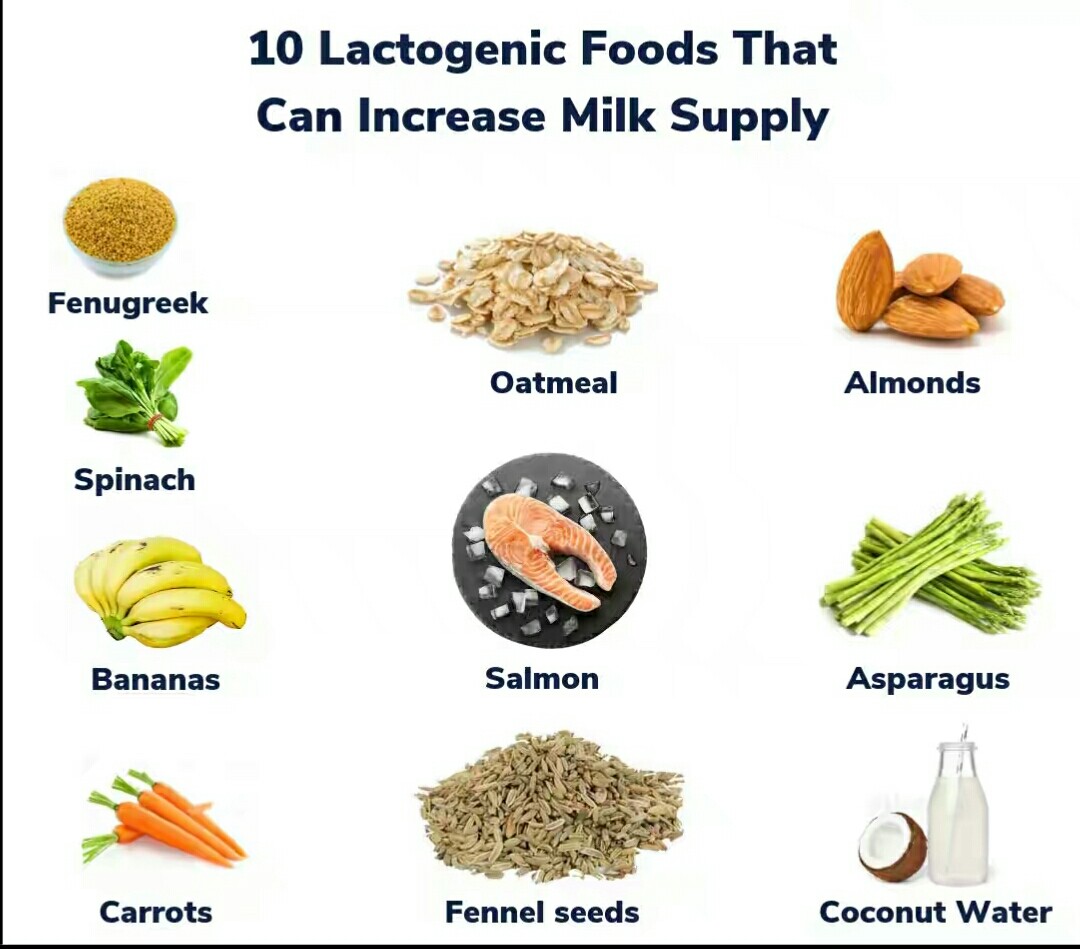




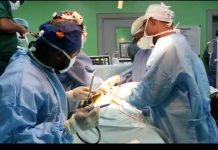


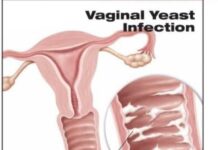

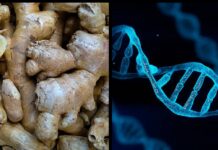


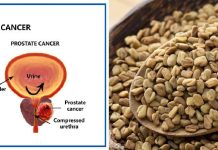
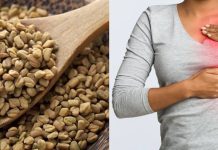

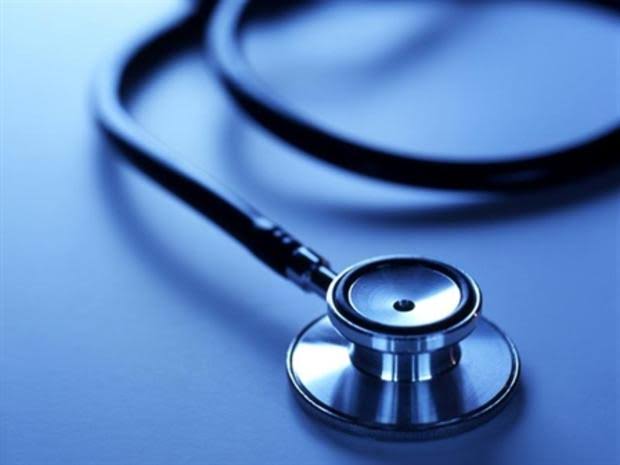


Tanx doc for sharing, it’s enlightening